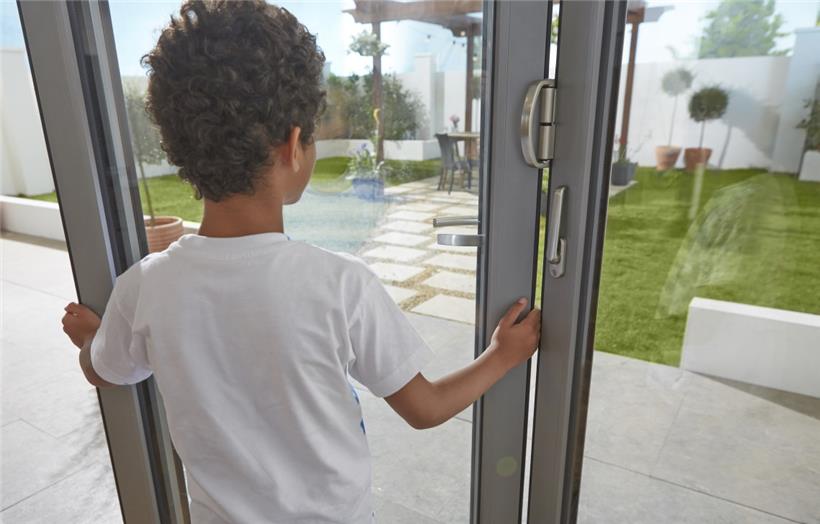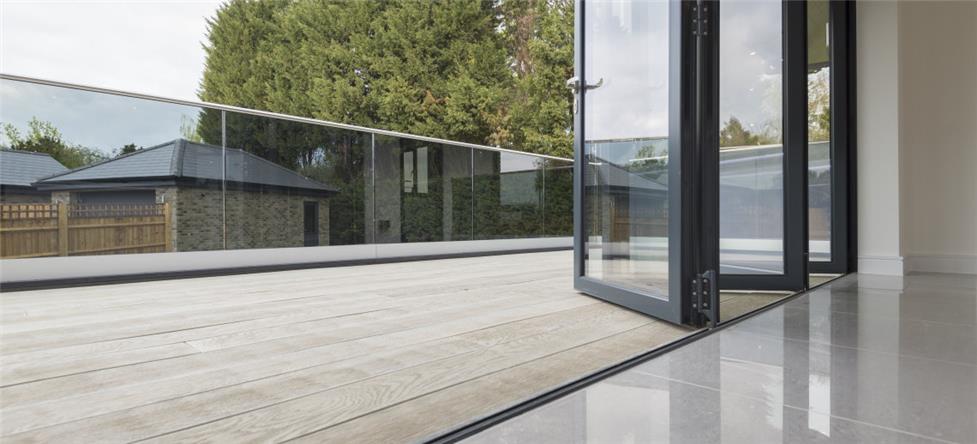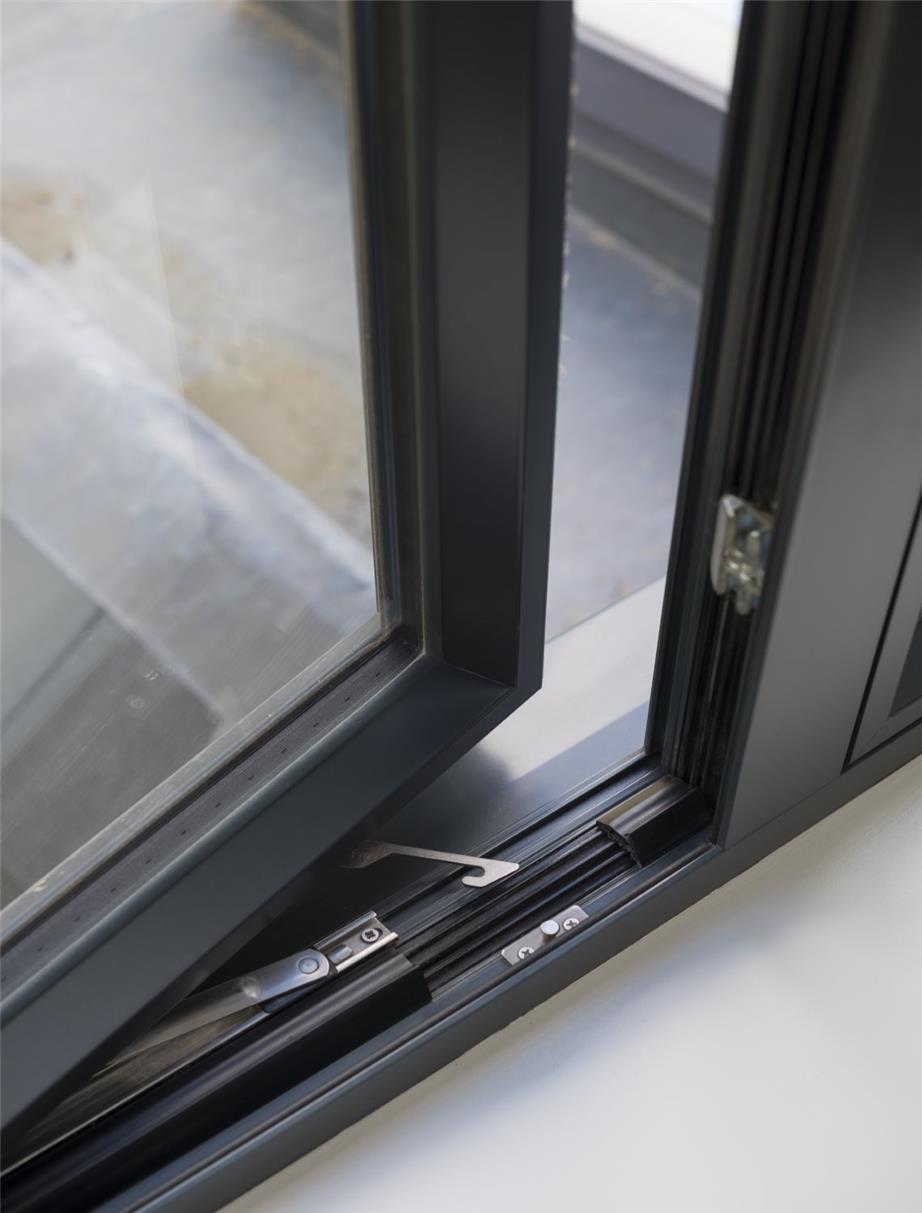Call for help and advice
T: 941-484-4861
E: info@origindw.com
< Advice Centre
You are using an outdated browser. Please upgrade your browser to improve your experience.
JavaScript seems to be disabled in your browser. You must have JavaScript enabled in your browser to utilize the functionality of this website.
skip to main content
Young children are constantly running around and wreaking havoc. And while it’s important to supervise them at all times, it’s easy to get caught off guard in a busy environment. Before a child can move independently, parents must childproof any areas of the home that could potentially be dangerous.
Installing safety features on to the property’s entrances and exits is essential. Without stringent care, young children could trap their fingers in doors or even fall out of windows and run through glass doors. However, safety measures may need to be altered and updated as the child grows.
Young children commonly trap their fingers in doors but this can easily be prevented by specifying doors with safety features.

Alexandra Giles, Head of Marketing at bi-fold door manufacturer, Origin, says: “Bi-fold doors are manufactured with finger safe gaskets, which prevent little fingers from being trapped.
“Door restrictors and strong magnetic catches also help to hold the doors in place while being operated.”
Finger guards can be placed across the hinge gap area of the door to enhance safety.
Colleen Driscoll, executive director at the International Association for Child Safety (IAFCS), says: “[Finger guards] work best for doors that are used often. Doors can’t close with a finger guard on them so if you need to deny access to a room, high locks are better options.
“Finger guards and/or locks can be good for swinging doors which often can be found in older homes between the kitchen and dining area.”
Even when supervised, children only need to escape their parent’s attention for a few seconds to cause chaos. This can include running out of the home or opening the door to strangers.

Colleen adds: “Supervision is always an important part of a home safety plan. However, because children are very quick, childproofing devices are important for injury prevention. We’ve had parents say that they watch their child but even someone with a careful eye can be distracted when a busy toddler starts exploring.”
To ensure children don’t open the front and back doors without a parent present, they must be kept locked.
“This is often an overlooked risk in the home,” Colleen explains. “Some doors will need to be kept closed to deny access to an area but an adult will still need access from both sides of the doors.
“Gates can also be used to deny access to dangerous areas of the home, [such as] to prevent access to the back and front doors. However, gates in the United States are designed for children from six months to 24 months per the standard. Children older than 24 months are at risk of escaping from doors so other measures for door safety are recommended.”
As children begin walking, it’s easy for them to trip up over uneven surfaces when running outside.
Dan explains: “Bifold doors can be installed with low thresholds so that it is level to the floor or has a minimal step. As well as preventing trips, this also makes entrances and exits wheelchair accessible.”

Children might also try to run through glass doors, believing they are open when they aren’t. To prevent this, precautions can be taken to make it more obvious when doors are shut.
Colleen says: “Some companies sell glass stickers to ensure people visibly see the glass in a door. Supervision and education are also important. For young children, gates could be used to create safe zones, away from the glass doors.”
According to research from the U.S. Consumer Product Safety Commission, an estimated 3,300 children aged five and below are treated each year in hospital emergency departments for injuries obtained from window falls.
However, simple steps can be taken to eliminate this risk. Such as, installing locks on windows to ensure young children can’t open them. However, during hot weather, other safety measures will need to be taken when windows are kept open.
Dan adds: “Window stops (also called window-limiting devices or window restrictors) can be specified and are used to prevent a window from opening more than 2.7 inches.”

Restrictor hooks can be easily unhooked in cases of emergency to allow the window to fully open.
Colleen says: “Emergency egress should be considered with the installation of these devices. Look for products that allow an adult to remove or deactivate the device for emergency exit.”
Parents should rearrange their furniture so that children can’t climb on windowsills.
If parents use blinds to prevent their children from opening them, they should be cordless as blind cords are a strangulation risk.
Dan adds: “To keep a home safe, it should pe protected from external threats. This can be done by buying doors with multi-point locking systems, high-security hinges, toughened glass and a heavy-duty handle. Glazing beads can also keep the panes from being removed from the outside.”
When childproofing a home, the exits and entrances must be prioritized. Safety measures can help prevent small fingers from getting trapped, children running out of the house unsupervised and dangerous falls.